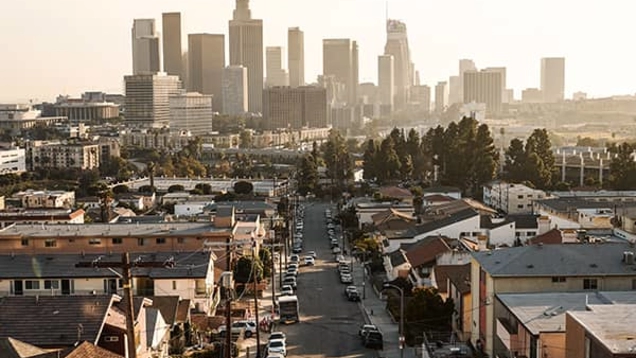Posted on 09/09/2024

HOUSING BREAKDOWN: WHAT HOUSING DO WE NEED IN LA?
We seem to have hundreds of words for our housing crisis in LA, but what do they all mean? This week, we’re breaking down different types of housing options that we talk about when it comes to homelessness. Spoiler alert: we need to build more of all of them.
Affordable Housing
These are units priced so that low or moderate-income households can afford them without being rent burdened (spending more than 30% of their income on rent). Right now in LA, 73% of renter households in LA are rent-burdened, and inability to pay rent is the #1 driver of homelessness.
The term “affordable” can sometimes be misleading because the housing shortage in LA is so bad that an “affordable” apartment still costs up to $2,000/month. That’s why it’s so important to invest in deeply affordable housing as well as social housing, which is housing that is permanently affordable, inclusive of all income levels, and run by the residents who live there.
Permanent Supportive Housing
Permanent Supportive Housing (PSH) combines affordable housing with wrap-around services designed to help people transition out of chronic homelessness. This model doesn’t just offer a safe place to live -- it also includes services for residents like:
➡️Mental health support
➡️Substance abuse/addiction treatment
➡️Job placement and training
Residents in PSH units can generally stay in these homes indefinitely with subsidized rent that is usually 30% of the residents’ income.
Interim Housing
Interim housing serves as a temporary solution to provide a stable environment while people transition from living on the street into more permanent housing options. These facilities offer services such as meals, hot showers, medical care, and case management to work with residents as they try to find permanent housing.
There are a few different types of interim housing. Single rooms – which can be found in sites like the Jan Clayton Center and many Tiny Home sites – are the most effective type of interim housing because they offer residents the maximum amount of privacy and security, often giving people a place of their own for the first time in years. Congregate shelters like “A Bridge Home” are sites with shared facilities and group dormitories for sleeping.
Inside Safe
Inside Safe is Mayor Bass’ homelessness program that cuts through red tape by bringing people from encampments inside into hotel/motel rooms as they wait for permanent housing. To date, over 2,870 people have been brought off the streets through Inside Safe, with 609 finding permanent housing so far.
Just in CD13, we’ve brought inside over 440 people through 14 different Inside Safe operations in Hollywood, East Hollywood, Echo Park, Koreatown, Historic Filipinotown, and Rampart Village.
Safe Parking
These are designated parking lots where people living in their vehicles can stay overnight safely and access restrooms, showers, and often case management services. This is a crucial option, especially given that while street homelessness and tents dropped by 38% last year in CD13, vehicular homelessness increased by 5%.
What’s Next?
As we mentioned at the top, we need an all the above approach to homelessness. Affordable housing and permanent supportive housing are the long-term solutions to homelessness, but they also take years to build, making interim housing and Inside Safe so important.
Homelessness doesn’t have a one-size-fits-all approach. A dormitory style-shelter bed might meet one person’s needs, but for people who are victims of domestic violence or experiencing mental illness, we need other accommodations to meet their needs.
By following a comprehensive and data-driven approach, we can create a safety net that addresses the needs of all our unhoused neighbors.
Two More Quick Hits!
1. Capping Abandoned Oil Wells
Even before LA became known for entertainment, it was an oil town, and District 13 is still home to hundreds of abandoned oil wells that can release toxic fumes into our communities. For decades, these wells have remained uncapped with no accountability for the companies responsible.
This week, City Council passed a motion we seconded from Councilmember Tim McOsker, directing the Office of Petroleum and Natural Gas Administration to report to City Council on their plans to pursue federal funding so we can finally cap the wells and protect our air.
2. Public Right of Way Assessment
After walking around the city, you probably wouldn’t be surprised to learn that it takes over 10 years on average to repair a broken sidewalk in LA! That’s a problem for all pedestrians, but especially people with disabilities and our elderly neighbors.
Now, the city is actually looking at some innovative ways to solve a range of issues related to public space in the city. The Bureau of Engineering is conducting an assessment of the City’s sidewalks, curb ramps, crosswalks, pedestrian signals, and bus stops, which you can find at bit.ly/BOEINPUT.